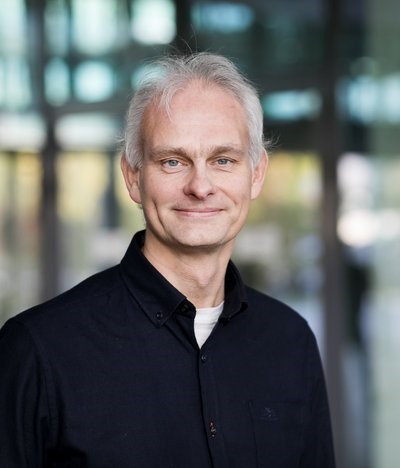Events @ Warwick Chemistry
Polymer-based Nanomotors and Artificial Cells
by Professor Jan Van Hest
IDL Auditorium in WMG (map hereLink opens in a new window).
Compartmentalization is generally regarded as one of the key prerequisites for life. In living cells, not only the cell itself is a compartment, with its properties controlled by the semipermeable cell membrane, but also the organelles play a crucial role in protecting and controlling biological processes. To better understand the role of compartmentalization, there is a clear need for model systems that can be adapted in a highly controlled fashion, and in which life-like properties can be installed. Polymer-based compartments are robust and chemically versatile, and as such are a useful platform for the development of life-like compartments. In this lecture both nanomotors and artificial cell systems will be discussed. The nanomotors are composed of biodegradable amphiphilic block copolymers that self-assemble into vesicular structures. By introducing asymmetry in the structure and by functionalizing them with propelling units they can be converted into nanomotors For example, via a shape change process a bowl-shaped structure is obtained out of a spherical vesicle. Within the cavity of the bowl enzymes are loaded which provide the nanostructure with motility upon conversion of chemical energy into kinetic energy. These nanomotors are explored for biomedical applications, in particular photodynamic therapy
The synthetic cell platform is composed of a complex polymer coacervate, stabilized by a biodegradable block copolymer which creates a semi-permeable membrane. The coacervate structures resemble better the crowded environment observed in the cytoplasm than vesicular structures normally do. Cargo, such as enzymes, can be highly effectively loaded in the coacervates, based on complementary charge and affinity, e.g. by using Ni-NTA-His tag interactions. This allows protocell communication with this robust synthetic platform. Via this system we have been able to show that we can bring enzymes involved in cascade reactions closer to each other, facilitating the outcome of the process. We can controllably release proteins from the artificial cell, mimicking natural secretion, and we can incorporate multiple artificial organelles in the interior, thereby mimicking the architecture of a eukaryotic cell. Finally, we are able to incorporate life-like features such as motility in these structures, making this class of artificial cells a very versatile platform to study and mimic biological processes.
Jan van Hest works at the cutting edge of (polymer) chemistry and biomedicine. He focuses on the design and synthesis of bio-inspired peptide-based materials and the development of conjugation methods for the preparation of biohybrid systems. The objective of his research is to construct smart compartments with life-like features, which develops along two main lines of research: nanomedicine and artificial cells and organelles. The nanomedicine research line in particular concerns medicine transport systems and synthetic vaccines. Using a combination of techniques from polymer science to protein engineering, well-defined carriers and scaffolds are developed for application in e.g. cancer treatment, immunology and ophthalmology. Van Hest is also active in the field of artificial and hybrid cells where he designs and constructs adaptive nano- and microcompartments that simulate living cells. His artificial nanoreactors can be incorporated as artificial organelles in living cells to complement or affect cellular processes.
Jan obtained his PhD in macro-organic chemistry with professor Bert Meijer from Eindhoven University of Technology (TU/e) in 1996. He then worked as a postdoc researcher on protein engineering with professor David A. Tirrell at the University of Massachusetts. In 1997 van Hest started working at DSM (Geleen), first as a researcher and later as group head in the development of new material concepts. In 2000 Van Hest was appointed as full professor at Radboud University Nijmegen. As of September 2016 he holds the chair of Bio-organic Chemistry at TU/e. Over 30 PhD candidates have gained their doctorates under his supervision. He has published over 300 scientific articles (H-index 57) and is (co-)inventor of 17 patents and patent applications. Jan van Hest is also the joint founder of the start-ups Encapson, FutureChemistry, Noviosense and Noviotech.

